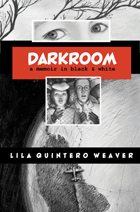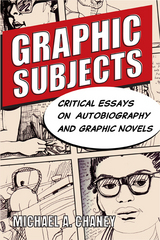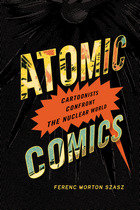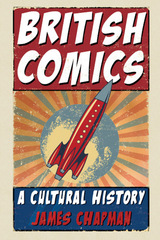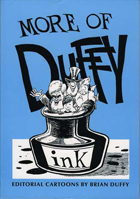Comics, Cartoons, and Graphic NovelsCollection by Chris Havlin (5 items)Comics and books about them Includes the following tags:
Autobiography, Civil rights movements, Comic books, strips, etc, Comics & Graphic Novels, Critical Essays, Duffy, Brian, Graphic novels, Humor, Memoir, More, Nonfiction, Politics, Topic
See More
|
Darkroom
by Lila Quintero Weaver
University of Alabama Press, 2012
Darkroom: A Memoir in Black and White is an arresting and moving personal story about childhood, race, and identity in the American South, rendered in stunning illustrations by the author, Lila Quintero Weaver.
In 1961, when Lila was five, she and her family emigrated from Buenos Aires, Argentina, to Marion, Alabama, in the heart of Alabama’s Black Belt. As educated, middle-class Latino immigrants in a region that was defined by segregation, the Quinteros occupied a privileged vantage from which to view the racially charged culture they inhabited. Weaver and her family were firsthand witnesses to key moments in the civil rights movement. But Darkroom is her personal story as well: chronicling what it was like being a Latina girl in the Jim Crow South, struggling to understand both a foreign country and the horrors of our nation’s race relations. Weaver, who was neither black nor white, observed very early on the inequalities in the American culture, with its blonde and blue-eyed feminine ideal. Throughout her life, Lila has struggled to find her place in this society and fought against the discrimination around her.
1
|
Graphic Subjects
by Michael A. Chaney
University of Wisconsin Press, 2011
Some of the most noteworthy graphic novels and comic books of recent years have been entirely autobiographical. In Graphic Subjects, Michael A. Chaney brings together a lively mix of scholars to examine the use of autobiography within graphic novels, including such critically acclaimed examples as Art Spiegelman’s Maus, David Beauchard’s Epileptic, Marjane Satrapi’s Persepolis, Alan Moore’s Watchmen, and Gene Yang’s American Born Chinese. These essays, accompanied by visual examples, illuminate the new horizons that illustrated autobiographical narrative creates. The volume insightfully highlights the ways that graphic novelists and literary cartoonists have incorporated history, experience, and life stories into their work. The result is a challenging and innovative collection that reveals the combined power of autobiography and the graphic novel.
2
|
Atomic Comics
by Ferenc Morton Szasz
University of Nevada Press, 2013
The advent of the Atomic Age challenged purveyors of popular culture to explain to the general public the complex scientific and social issues of atomic power. Atomic Comics examines how comic books, comic strips, and other cartoon media represented the Atomic Age from the early 1920s to the present. Through the exploits of superhero figures such as Atomic Man and Spiderman, as well as an array of nuclear adversaries and atomic-themed adventures, the public acquired a new scientific vocabulary and discovered the major controversies surrounding nuclear science. Ferenc Morton Szasz’s thoughtful analysis of the themes, content, and imagery of scores of comics that appeared largely in the United States and Japan offers a fascinating perspective on the way popular culture shaped American comprehension of the fissioned atom for more than three generations.
3
|
British Comics
by James Chapman
Reaktion Books, 2024
Arguing that British comics are distinct from their international counterparts, a unique showcase of the major role they have played in the imaginative lives of British youth—and some adults. In this entertaining cultural history of British comic papers and magazines, James Chapman shows how comics were transformed in the early twentieth century from adult amusement to imaginative reading matter for children.
Beginning with the first British comic, Ally Sloper—known as “A Selection, Side-splitting, Sentimental, and Serious, for the Benefit of Old Boys, Young Boys, Odd Boys generally, and even Girls”—British Comics goes on to describe the heyday of comics in the 1950s and ’60s, when titles such as School Friend and Eagle sold a million copies a week. Chapman also analyzes the major genres, including schoolgirl fantasies and sports and war stories for boys; the development of a new breed of violent comics in the 1970s, including the controversial Action and 2000AD; and the attempt by American publisher, Marvel, to launch a new hero for the British market in the form of Captain Britain. Considering the work of important contemporary comic writers such as Alan Moore, Grant Morrison, Ian Edginton, Warren Ellis, and Garth Ennis, Chapman’s history comes right up to the present and takes in adult-oriented comics such as Warrior, Crisis, Deadline,and Revolver, and alternative comics such as Viz.
Through a look at the changing structure of the comic publishing industry and how comic publishers, writers, and artists have responded to the tastes of their consumers, Chapman ultimately argues that British comics are distinctive and different from American, French, and Japanese comics. An invaluable reference for all comic collectors and fans in Britain and beyond, British Comics showcases the major role comics have played in the imaginative lives of readers young and old.
4
|
|
| Click here to go to the beginning. | |||||
